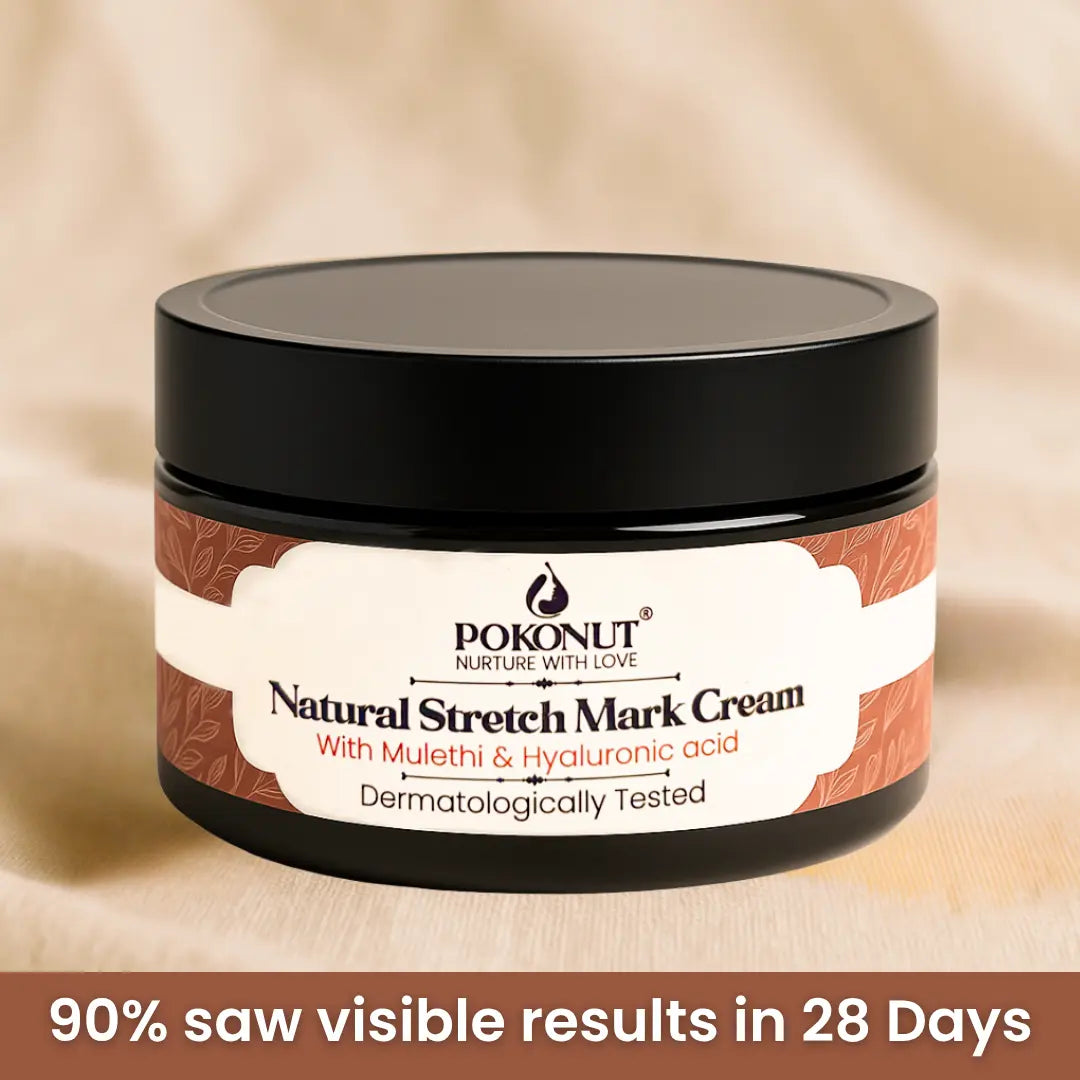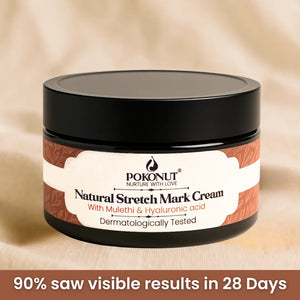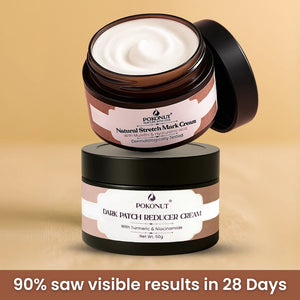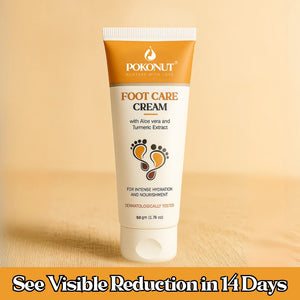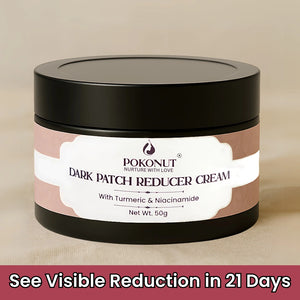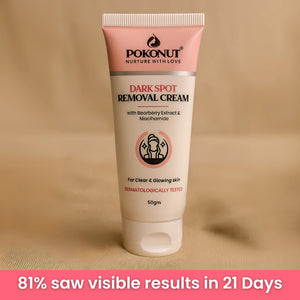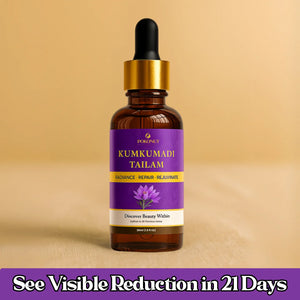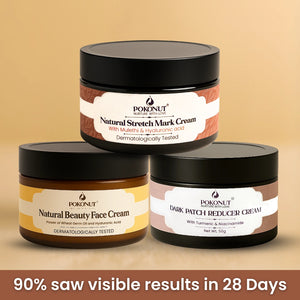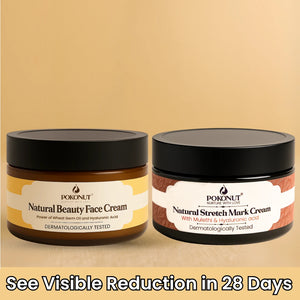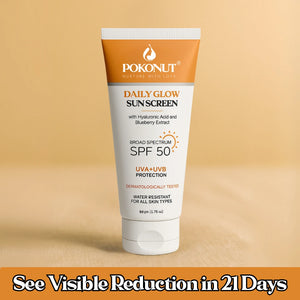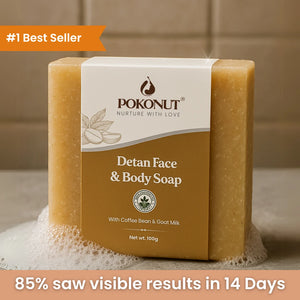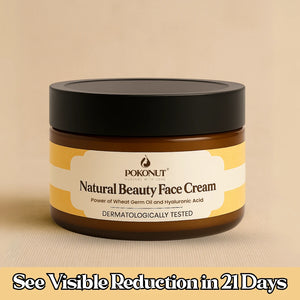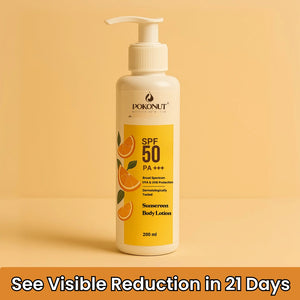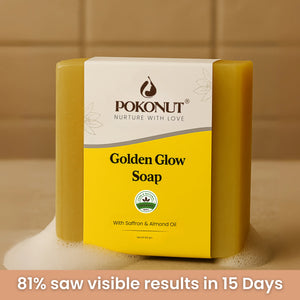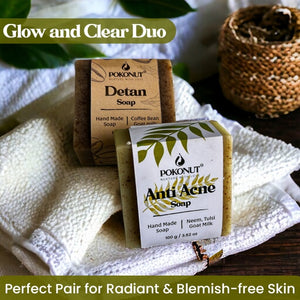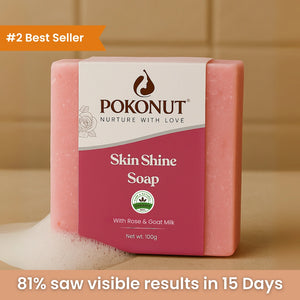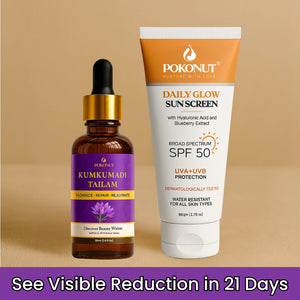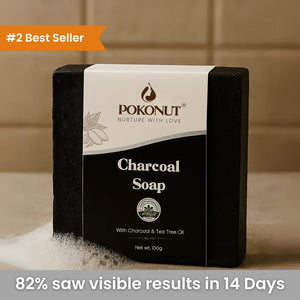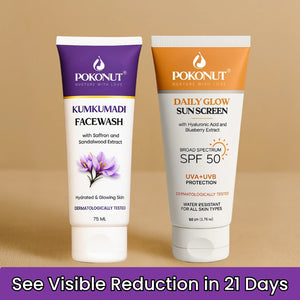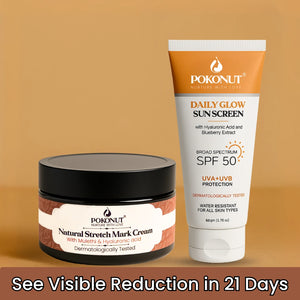Salicylic vs Kojic: Which Acid Should You Trust for Dark Spots?

Medically Reviewed By:
Dr. Mousumi Dash, BAMS
Written by Our Editorial Team
The best acid for treating stubborn dark spots depends on understanding what each option can do. Kojic acid comes from fungi during food fermentation processes like rice and sake. It works by stopping melanin production to fade hyperpigmentation. Salicylic acid, a beta-hydroxy acid (BHA), dives deep into pores and removes dead skin cells, oil, and dirt.
These acids improve your skin's appearance differently. Kojic acid targets stubborn pigmentation, age spots, and melasma by blocking tyrosin formation. Salicylic acid proves more effective if your dark spots link to acne because it unclogs pores and reduces inflammation. Your choice between these acids depends on your skin's specific needs and the root cause of those dark spots.
This piece breaks down how each acid works and helps you use them safely in your skincare routine. You'll learn whether kojic acid, salicylic acid, or maybe even combining both could work best for your skin.
What Does Each Acid Do for Your Skin?
Both acids target skin concerns differently. Understanding their unique properties helps you choose the right acid to treat dark spots on your skin.
Kojic Acid: Brightening and melanin suppression
Kojic acid comes from fungi during the fermentation of foods like rice, soy sauce, and sake. Unlike exfoliating acids, kojic acid works as a skin-lightening agent. It stops tyrosine formation, an amino acid your skin needs to produce melanin.
Kojic acid blocks tyrosinase (the enzyme that produces melanin) and prevents new melanin from forming instead of removing existing pigmentation. This makes it work well for:
-
Reducing hyperpigmentation, melasma, and age spots
-
Evening out skin tone and brightening complexion
-
Protecting skin from environmental stressors with antioxidants
You might see results in two weeks if you use it regularly. Most improvements show up after three months.
Salicylic Acid: Exfoliation and acne control
Salicylic acid is a beta-hydroxy acid (BHA) that comes from willow bark. Unlike kojic acid, it works as an exfoliant. Salicylic acid dissolves in oil and goes deep into pores, which makes it great for treating acne.
Salicylic acid helps your skin by:
-
Breaking down dead skin cells that clog pores
-
Reducing inflammation and oil production
-
Fighting bacteria that cause breakouts
You can find salicylic acid in strengths from 0.5% to 2% in over-the-counter products. It takes several weeks of regular use to see full results.
Which acid is best for removing dark spots?
Your dark spots' cause determines which acid works better:
Kojic acid works better for melasma and sun-related hyperpigmentation because it directly stops melanin production. This makes it ideal for age spots, sun damage, and hormone-related dark patches.
Salicylic acid treats post-acne dark spots better since it tackles both the spot and acne at once. It also works great for oily skin and when clogged pores cause discoloration.
Some skincare products combine both acids to get better results. Salicylic acid cleans and prepares your skin, letting kojic acid penetrate deeper and brighten better. If you're looking for the best dark spot removal cream that brings both ingredients together effectively, this is a great place to start.
Choosing Based on Skin Concerns
The right acid choice depends on your main skin concern. Each acid brings unique benefits that target specific problems better than others.
Hyperpigmentation and Melasma: Kojic Acid's role
Kojic acid stands as a preferred treatment option for stubborn dark patches from melasma or sun exposure. This acid works as a tyrosinase inhibitor that targets the enzyme responsible for melanin production. It gradually reduces dark spots and evens out skin tone. The acid works best for:
-
Age spots and sun damage
-
Melasma (people call it the "pregnancy mask")
-
Hormone-related discoloration
Your natural skin tone stays unchanged as kojic acid works only on areas with excess melanin production. Dermatologists note that patients see their original results in 4-6 weeks. The complete improvement shows up by the one-year mark.
Acne and Clogged Pores: Salicylic Acid's strength
Salicylic acid brings the most important advantages if your dark spots come from acne or you have oily, congested skin. This oil-soluble BHA goes deeper into pores than water-soluble acids.
Salicylic acid excels at:
-
Breaking down excess sebum and oils to clear pores
-
Getting rid of blackheads and whiteheads
-
Fighting active breakouts and stopping new ones
Products available over-the-counter contain 0.5% to 2% concentrations. These levels work well yet remain gentle enough for daily use. The acid helps with both active acne and the dark marks that show up afterward.
Combination Skin: When to use both
An all-encompassing approach to skin concerns sometimes needs both acids. You might want to use both acids if you have:
-
Dark spots after acne (salicylic acid fights acne while kojic acid fades marks)
-
Skin that's both oily and has pigmentation issues
-
Stubborn melasma that one treatment hasn't fixed
For a skincare approach that adapts to real, everyday Indian skin concerns, Pokonut offers thoughtfully formulated products using ingredients like salicylic acid and kojic acid, crafted to deliver visible results without irritation.
The smart way involves using salicylic acid to clear pores first. This creates a clean base so kojic acid can work better on pigmentation. In spite of that, these products should enter your routine slowly. Both acids can make your skin more sensitive to sun.
How to Use Them in Your Routine
You need the right application techniques to get the best results from kojic and salicylic acids in your skincare routine. This will help you maximize benefits without irritating your skin.
Daily vs Weekly Use: Frequency guidelines
Your skin's tolerance and product choice will determine how often you should apply these acids:
Kojic Acid: Your skin needs time to adjust before daily use, depending on the concentration. Start with a few applications each week if you're new to it. You'll need patience since visible improvements in pigmentation could take weeks or months.
Salicylic Acid: The best approach is to start with 2-3 weekly applications and slowly increase the frequency as your skin adapts. Your skin might become dry and irritated from too much exfoliation, so take it easy. Only use salicylic acid twice daily when your dermatologist recommends it.
The safest way to use both acids is to alternate them on different days. This helps reduce the chance of irritation.
Layering with Moisturizers and Sunscreen
Your products need to be applied in the right order:
-
Cleanse: A gentle cleanser removes impurities
-
Apply acids: When using both acids, salicylic acid goes first to exfoliate, followed by kojic acid
-
Moisturize: Let the acids sink in, then apply a hydrating moisturizer to protect your skin barrier
-
Sunscreen: Your morning routine should end with broad-spectrum SPF 30 or higher
Timing plays a crucial role—apply sunscreen 15 minutes before stepping out. These acids make your skin more sensitive to sun damage, so daily sunscreen becomes essential.
Patch Testing and Starting Slow
A patch test helps you spot potential skin reactions:
-
Put a tiny amount of product on your inner forearm or behind your ear
-
Watch for redness, itching, or irritation over 24 hours
-
Move on to facial application if your skin shows no reaction
The secret to success lies in taking things slow. Start with lower concentrations and fewer applications while your skin builds tolerance. Pay attention to your skin's signals—cut back on usage if you notice too much dryness, redness, or irritation.
Mistakes to Avoid When Using Acids
The best acid for dark spots won't give you results if you make certain mistakes that can damage your skin. Your acid treatments should improve your pigmentation concerns, not make them worse.
Over-exfoliation with Salicylic Acid
Too much salicylic acid can damage your skin's protective barrier severely. You might notice these signs of over-exfoliation:
-
Your skin becomes sensitive to other products
-
The skin feels dry, tight, or starts flaking
-
Redness and inflammation appear
-
More breakouts occur unexpectedly
-
The texture becomes rough and uneven
Your attempt to improve your skin can damage its moisture barrier and make it vulnerable to irritation and bacteria. The recovery process needs you to stop all exfoliation right away. Switch to gentle cleansers and use barrier-repairing ingredients like ceramides.
Skipping SPF with Kojic Acid
Your brightening efforts go to waste if you skip sunscreen while using kojic acid. The acid makes your skin more sensitive to light and vulnerable to UV damage. This increased sun sensitivity ended up creating new dark spots while you try to treat existing ones—like taking one step forward and two steps back.
Your skin needs broad-spectrum SPF 30 or higher daily, whatever the weather or indoor activities. Reapplication throughout the day is vital, especially when you have extended sun exposure.
Mixing with incompatible ingredients
Some ingredients don't play well with acids and can cause irritation or make them less effective. Don't mix salicylic acid with:
-
Retinol (it causes excessive dryness)
-
Other AHAs like glycolic acid (you risk over-exfoliation)
-
Benzoyl peroxide (it leads to irritation)
Niacinamide works great with salicylic acid and regulates oil production without irritating your skin.
The best acid to remove dark spots needs proper ingredient pairing. New products should be used alone for several weeks before adding other active ingredients. This careful approach helps you identify which product causes bad reactions and protects your skin during your trip to fade pigmentation.
Comparison Table
|
Characteristic |
Salicylic Acid |
Kojic Acid |
|
Source/Origin |
Derived from willow bark |
Derived from fungi during fermentation of foods (rice, sake, soy sauce) |
|
Main Function |
Exfoliant (BHA) that penetrates pores |
Skin-lightening agent that inhibits melanin production |
|
Main Benefits |
- Exfoliates dead skin cells - Unclogs pores - Reduces inflammation - Provides antibacterial benefits - Controls oil production |
- Reduces hyperpigmentation - Evens out skin tone - Brightens complexion - Provides antioxidant protection - Blocks tyrosine formation |
|
Best For |
- Acne-related dark spots - Oily skin - Clogged pores - Post-inflammatory hyperpigmentation |
- Melasma - Age spots - Sun damage - Hormone-related discoloration |
|
Results Timeline |
Results show after several weeks of consistent use |
Results appear in 2-4 weeks, with major improvements visible between 3 months to 1 year |
|
Usage Frequency |
Start with 2-3 times weekly and gradually increase |
Daily use possible after skin adjusts; begin with few times per week |
|
Concentration Range |
0.5% to 2% in over-the-counter products |
Not mentioned |
|
Safety Precautions |
- Avoid mixing with retinol and benzoyl peroxide - Can cause over-exfoliation if overused - Makes skin more sensitive to sun |
- Sunscreen use essential - Makes skin more sensitive to light - Needs consistent use for results |
Conclusion
The best acid for your dark spots depends on what's causing them. We analyzed the unique properties of salicylic and kojic acid and found they work differently on various skin issues. Kojic acid blocks melanin production and works great for age spots, melasma, and sun damage. People who use it see gradual improvements in 2-4 weeks, with substantial results showing up after a few months of regular use.
Salicylic acid shines when it comes to acne-related pigmentation. This BHA dives deep into oil-clogged pores and tackles both active breakouts and leftover dark marks. Your dark spots from past or current acne will respond better to salicylic acid's complete solution.
These acids can work together in some cases. Salicylic acid clears away dead skin cells first, which lets kojic acid penetrate better and tackle those pigmentation issues more effectively. In spite of that, you'll need to be careful not to irritate your skin.
Whatever acid you pick, some basic rules apply. Start with fewer applications and let your skin build up tolerance. On top of that, it's crucial to use sunscreen because these acids make your skin more sensitive to sun damage. This sensitivity could make your dark spots worse. Don't overdo it with salicylic acid - too much can harm your skin's barrier and create new issues.
Both acids can make your skin look better if you use them right. The right choice isn't about which acid works better overall - it's about which one targets your specific skin concerns. Match the acid to your type of dark spots and you'll get clearer, more even skin tone.
FAQs
Q1. Which acid is more effective for treating dark spots: kojic acid or salicylic acid?
The effectiveness depends on the cause of your dark spots. Kojic acid is better for age spots, melasma, and sun-related hyperpigmentation as it inhibits melanin production. Salicylic acid is more effective for acne-related dark spots and oily skin due to its exfoliating and pore-clearing properties.
Q2. How long does it take to see results when using these acids for dark spots?
Results vary, but with kojic acid, you may notice initial improvements in 2-4 weeks, with significant results after 3 months of consistent use. Salicylic acid typically requires several weeks of regular application before showing full effects.
Q3. Can I use both kojic acid and salicylic acid together in my skincare routine?
Yes, you can use both acids strategically. Apply salicylic acid first to exfoliate and clear pores, then follow with kojic acid to address pigmentation. However, introduce them gradually and on alternate days to avoid potential irritation.
Q4. Are there any precautions I should take when using these acids?
Always use sunscreen with at least SPF 30 as both acids increase sun sensitivity. Start with less frequent applications and gradually increase as your skin adjusts. Avoid over-exfoliation with salicylic acid, and don't mix it with ingredients like retinol or benzoyl peroxide without professional guidance.
Q5. How often should I apply kojic acid and salicylic acid for best results?
For kojic acid, you can use it daily once your skin adjusts, starting with a few times per week. With salicylic acid, begin with 2-3 applications weekly, gradually increasing frequency as tolerated. Never use salicylic acid twice daily unless directed by a dermatologist.
About Doctor :

